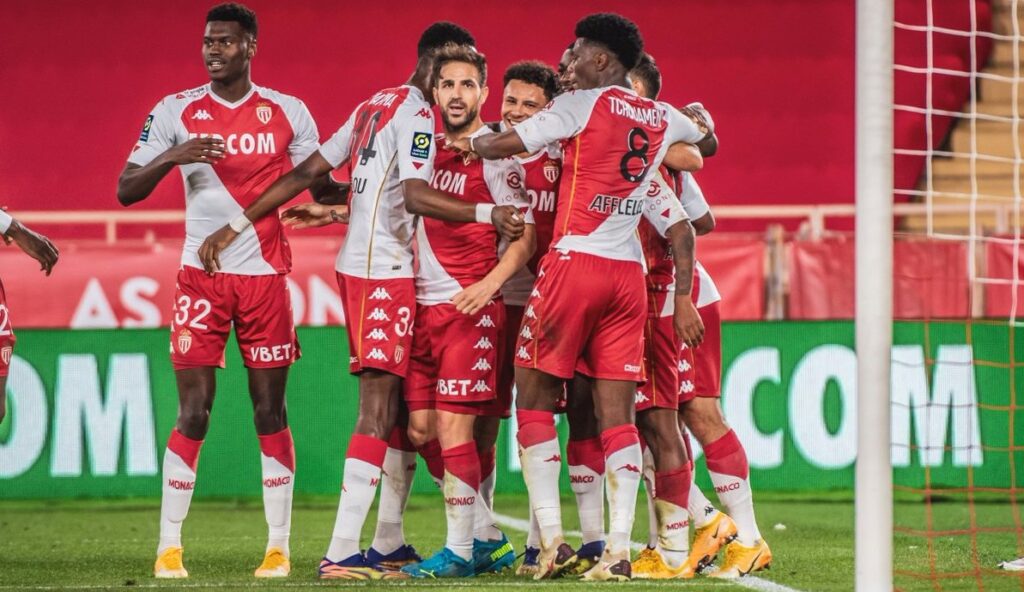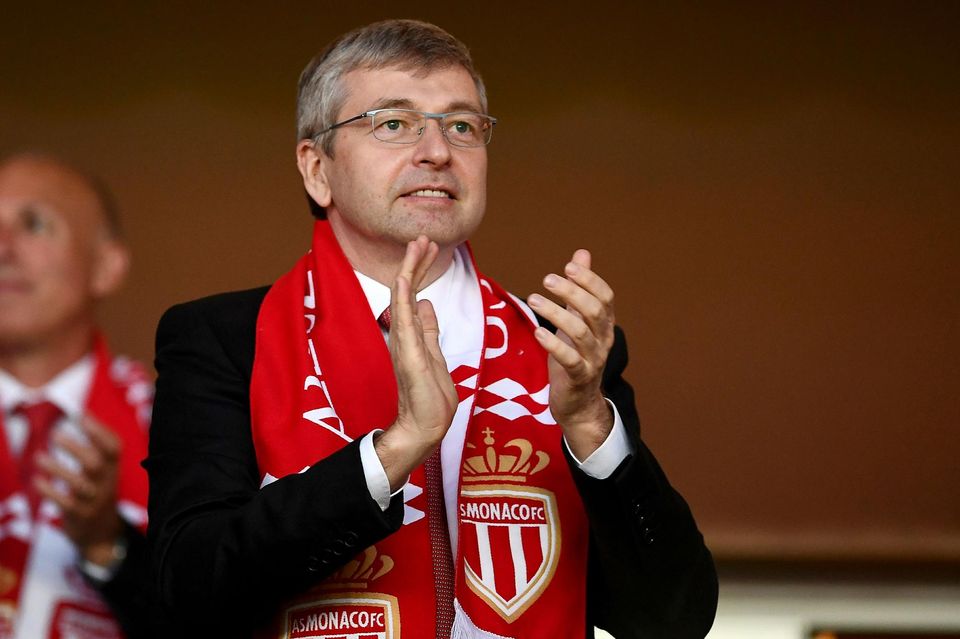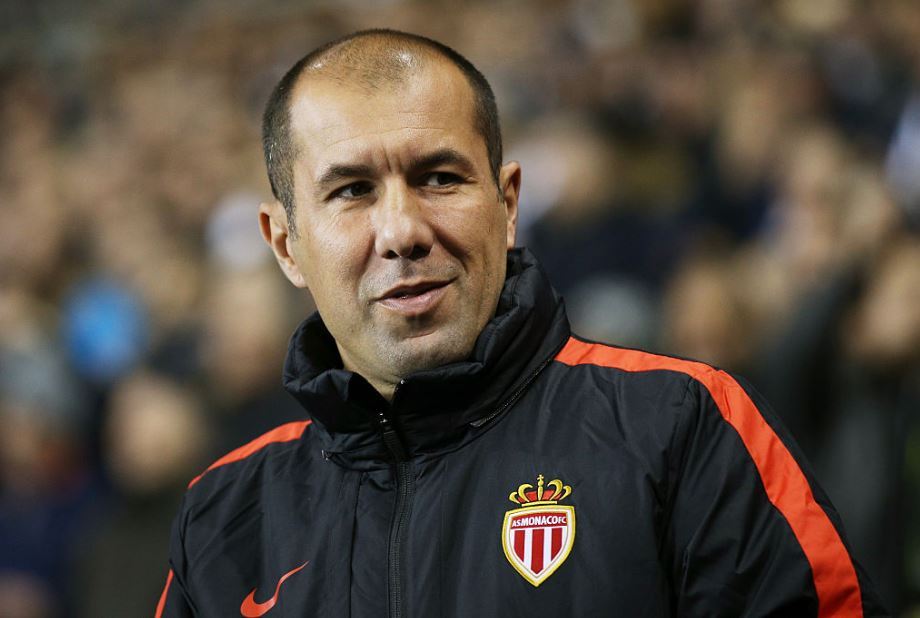AS Monaco
An iconic club of the French Premier League and one of the most successful teams in France, AS Monaco has built its legend on sporting achievements that have marked the history of French football. The club, a favourite of the Princely family, is a true Monaco institution.

What would Monaco be without its legendary football club? Intimately tied to the Principality’s modern history, AS Monaco (ASM) has developed since its foundation in 1924 into a fully-fledged Monegasque institution and a symbol of Monaco throughout the world. The AS Monaco name comes with nearly a century of history and exploits that are the pride of Monaco and the many Red and White supporters throughout France.
The club’s foundation (1924)
Officially, AS Monaco was founded on 24th August 1924. However, its history precedes the date by a few years. One of the oldest clubs of the French Football Federation, ASM was first created at the end of the First World War (1914-1918), following the merger of Herculis Monaco with other sports groups in the Principality and the nearby town of Beausoleil. On 1st August 1919, AS Monaco was born, affiliated with the French Football Federation (FFF) under the number 91. A few years later, in 1924, the Association Sportive de Monaco was founded. AS Monaco would eventually be merged into Monaco’s sports club, becoming the football section of the wider club. 1924 has now become the official foundation date of AS Monaco, and it is indeed on 24 August 2024 that the centenary of ASM will be celebrated.
Beginnings (1930-1960)
AS Monaco had a bumpy start to its career. It is only in the 1950s that the club really comes into its own and can first take on professional football leagues. AS Monaco plays its very first French Premier League match in 1953. The match is played in the Louis II stadium, built just over a decade previously in 1939, and which at the time faced the Fontvieille port. If the Reds and Whites lose to Toulouse FC, the match marks the beginning of the ASM’s long history in elite French football. The Monegasque division lands its first Premier League podium a few seasons later, in 1956. During the following 1957-1958 season, the club scores a second place in the League. In 1959-1960 the club secures the Coupe de France, its first major win, after a thrilling final against AS Saint-Etienne (4-2 following extra time).
First major titles (1960-1990)
Made famous by the iconic diagonal jersey designed by Princess Grace, the Monegasque team dominate the early 1960s, threatening the best teams in the championship. And at the end of a masterful 1960-1961 season, the Reds and Whites secure their first French championship title. The win is enough to secure entry to the European Cup, where the men of Lucien Leduc unfortunately lose both their matches.
The 1960-61 season is also a prime time for the ASM youth division, who win the Gambardella Cup after a final against FC Metz (2-1). The following season, AS Monaco witnesses a year that would go down in history. ASM wins both the French championship and the Coupe de France, thanks to the likes of Biancheri, Hidalgo, Carlier Courtin, Tabernet, and others. Unfortunately for the Monegasques, the end of the decade is less glorious than its beginnings, and by the 1968-69 season, AS Monaco returns to the second division, just sixteen years after leaving it.
The 70s comeback
Only two seasons after its fall from grace, ASM manages a feeble comeback and secures a place in the first division. However, the club eventually falls back down into the second division. Then, in 1975, thanks to Jean-Louis Campora, ASM’s new young president, the club picks itself up, once and for all. Led by a golden trio made of ASM captain Jean Petit, the talented Christian Dalger, and Argentinean striker Delio Onnis, the club returns to the top of the French championship.
>> READ MORE: Top 5 players to have worn the AS Monaco jersey
In 1977-1978, the club achieves the unthinkable and becomes French champion the very same year it has come back to the first division. Lucien Leduc, once again the club’s coach, becomes a popular hero, and the team’s star players – Ettori, Courbis, Noguès Vannucci, and Correa – make a name for themselves. Winner of the 1979-1980 French Cup, Monaco now turns its attention to the youth. The generation of Bellone, Amoros, Bravo, Bijotat, Ricort, and Couriol is born.
Monaco courts the heavens
Under the leadership of three renowned coaches – Gérard Banide, Lucien Muller, and Stefan Kovacs – and a young coach, a certain Arsène Wenger, AS Monaco, reaches new heights. In 1981-1982, the Red and Whites win their fourth French championship title. The 1984-1985 season sees the inauguration of the new Louis II stadium. Its refined architecture, which echoes the sophisticated spirit of the Principality, along with its 20,000 seats (today 17,000), give ASM a tool to revolutionise its image.
Thanks to Arsène Wenger, AS Monaco secures a fifth French championship title during the 1987-1988 season, eventually reaching the quarter-finals of the 1988-89 Champions League, which at the time was called the European Cup of Champions Clubs. 1988 also marked the AS Monaco debut of football prodigy and future Ballon d’Or winner, Geroge Weah.
Taking on Europe (1990-2010)
In the early 1990s, ASM is the French Premier League runner-up not once, but twice – both times behind Olympique de Marseille (OM). Led by Djorkaëff, Thuram, Petit, Klinsmann, Scifo, and coached by Arsène Wenger, Monaco reaches the semi-finals of the Champions League, following the disqualification of OM. At the end of the 1993-1994 season, Jean-Luc Ettori retires after playing his 755th match with the Monegasque jersey, a record for the club.
1994 also marks the last year that Arsène Wenger heads of the teams. The following season, the coach is replaced by Jean-Tigana, who helps the club secure a sixth French championship title, thanks to the masterful skill of Barthez, Petit, Bernarbia, Henry, Anderson, and Ikpeba. The players are a golden generation that takes ASM to the semi-finals of the Europa League. The following season, ASM beats Manchester United and reaches the semi-finals of the Champions League. Despite losing the semi-finals against Juventus, the club secures a place amongst the leading football clubs of Europe. In the spring of 2000, with Barthez, Marquez, Lamouchi, Gallardo, Simone, and Trezeguet, the Red and Whites score their seventh French championship title.
Champions League glory
After winning the French Championship in 2000, coach Claude Puel leaves his place to Didier Deschamps, who would eventually go on to coach the French national team. If Deschamps’ beginnings are complicated, the 2002-2003 season marks a revival of the team’s talent and ASM wins the French Ligue Cup (not to be confused with the French Premier League) in front of nearly 80,000 people, at the Stade de France, thanks to a goal by Shabani Nonda, the championship’s top scorer.
>> READ MORE: Remembering Morientes’ Champions League heroics vs. Real Madrid in 2004
Despite the resignation of Jean-Louis Campora, the club’s iconic president, AS Monaco continues to shine thanks to several French team managers, such as Sébastien Squillaci and Patrice Evra. Then comes the 2003-2004 season, and an extraordinary adventure, which will remain forever engraved in the hearts of fans and the annals of French football.
At the end of a successful European season, marked by the elimination of Zinedine Zidane’s Real Madrid and Chelsea, managed by Claudio Ranieri, AS Monaco reaches the final of the Champions League for the first time in its history. Unfortunately, the outcome is far from glorious. Monaco and its leading men, Roma, Ibarra, Squillaci, Givet, Rodriguez, Bernardi, Zikos, Plasil, Giuly, Prso, Morientes, Nonda, are squashed by José Mourinho’s FC Porto (3-0).
A second fall from grace
In the late 2000s, ASM is back in the dark ages of football. The club will see three presidents come and go in only five years (Michel Pastor, Jérôme de Bontin and Etienne Franzi). The same goes for the bench, where coaches succeeded one another.
Didier Deschamps resigns from the position during the 2005-2006 season, giving his place to Francesco Guidolin, who is eventually replaced Lazlo Bölöni. Bölöni will only stay a few months at the head of the team, leaving the position to Laurent Banide.
Appointed to replace the former AS Monaco training centre coach, Brazilian Ricardo arrives in Monaco during the 2007-2008 season and is eventually taken over by Guy Lacombe. In 2008, ASM secures a place in the final of the Coupe de France and finishes eighth in the French championship, its best performance since 2004. Yet, ASM has still not seen the end of its chaotic period.
Rebirth (2010-2020)
Following several years of mismanagement, ASM falls back into Ligue 2 by the end of the 2010-2011 season – the first downgrade in thirty-five years. The setback is a vertiginous fall that will deeply mark the club.
Dmitry Rybolovlev arrives as President of AS Monaco with great ambitions. With Claudio Ranieri on the bench, the Reds and Whites manage to climb back up to Ligue 1 at the end of the 2012-2013 season, thanks to a Ligue 2 French championship title.
>> READ MORE: Dmitry Rybolovlev reaffirms future ambitions for AS Monaco

Remembering the Champions League
In the very first year of its Premier League comeback, Claudio Ranieri’s AS Monaco finishes in second place in the French Championship, astonishing everyone and qualifying again for the Champions League. Led by Leonardo Jardim, the Monegasques reach the Champions League quarter-finals in 2014-2015 after beating Arsenal. Back on the Ligue 1 podium for the 2015-2016 season, ASM asserts itself as one of the very best clubs in the French championship after Paris Saint-Germain.

An 8th French championship
As a certain Kylian Mbappé becomes football’s new darling, AS Monaco achieves a phenomenal run in the 2016-2017 Champions League. ASM beats Manchester City and Borussia Dortmund, eventually reaching the Champions League semi-finals for the fourth time in their history. Meanwhile, in the French Premier League, the men of Leonardo Jardim manage to put an end to the domination of Paris Saint-Germain and win their eighth French championship title.
2016-17 is an unforgettable season for the club. The following year, Monaco confirms its new status by finishing second in the championship, right behind PSG. However, when it comes to the Champions League, matters are more complicated. The team suffers from a premature elimination in the group phase. Again, managers come and go. Thierry Henry takes over the team in October 2018 and is succeeded by Leonardo Jardim just a few months later. Seventeenth in the 2018-2019 season, AS Monaco comes close once again to slipping back into Ligue 2, but manages to save itself in extremis.
>> READ MORE: AS Monaco celebrates its 1000th win under the eyes of President Dmitry Rybolovlev
Rankings
Champions League:
Finalist: 2004
Semi-finalist: 1994, 1998 and 2017
UEFA Cup Winners’ Cup:
Finalist: 1992
Semi-finalist: 1990
Europa League (formerly known as UEFA Cup):
Semi-finalist: 1997
French Premier League:
Winner: 1961, 1963, 1978, 1982, 1988, 1997, 2000 and 2017
Runner-up: 1964, 1984, 1991, 1992, 2003, 2014 and 2018
Ligue 2:
Winner: 2013
Runner-up: 1953, 1971 and 1977
Coupe de France:
Winner: 1960, 1963, 1980, 1985 and 1991
Finalist: 1974, 1984, 1989 and 2010
Trophée des champions:
Winner: 1997 and 2000
French League Cup:
Winner: 2003
Finalist: 2001, 2017 and 2018









